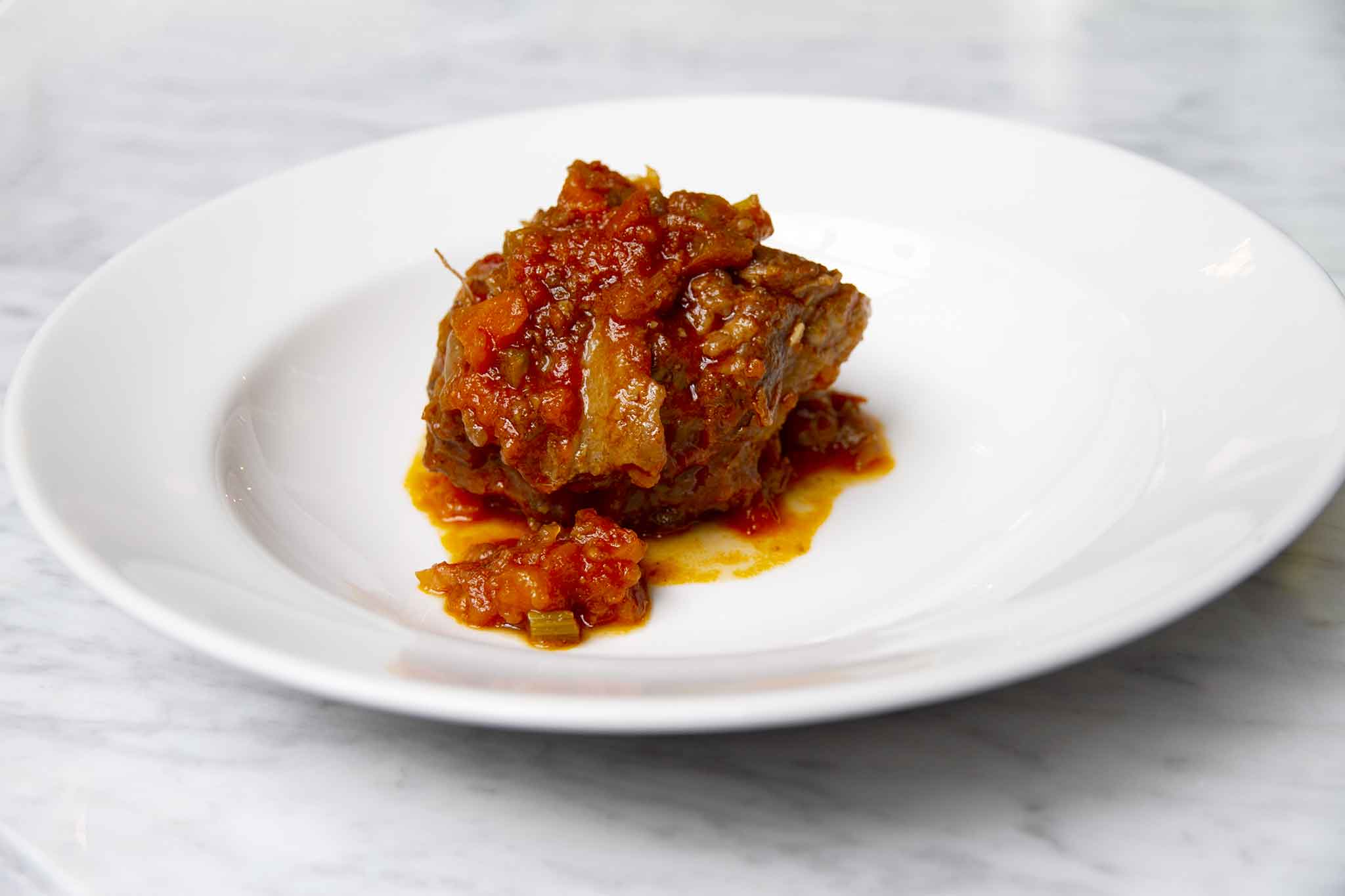

It is delicious sliced very thinly and served over rustic brown bread 🙂 I have also used a 400g tin of chopped tomatoes, which is slightly more than my nonna Wanda’s recipe called for. Lardo is a cured product (like pancetta, Italian hams, guanciale etc) it’s the fatty part of the pork found under the skin, typically in the neck or back region, seasoned with lots of salt and sometimes herbs (as always, there are regional variations and variations from individual butchers) and left to cure over time. For the same reason (and for reasons of availability and cost in the UK), I have omitted the ‘lardo’. And I’ve used just 30g of butter rather than 150g as the meat makes the dish quite fatty already.

I have remained as true as possible to my grandmother’s recipe – I’ve replaced the ‘Gradina’ (a brand of margarine) with butter, which my zia Emilia also does. But that’s what makes it so deliciously tasty and tender. This recipe is very easy to make, but it does take time as it has to cook for about 2.5-3 hours – until the meat is beginning to fall off the bones! It’s also not for the faint-hearted…it’s very rich as oxtail is a very fatty meat. My nonna Wanda’s recipe for Coda alla Vaccinara – transcribed into her ‘leaving home’ cookbook by my zia Emilia I love that she still uses that original cookbook of hers and that she shares them with me 🙂 Here is a photo of the page with nonna Wanda’s Coda alla Vaccinara recipe, transcribed by zia Emilia all those years ago (shared with permission from and my gratitude to my zia Emilia): When my zia Emila (my youngest auntie) was about to move out of the family home because she was getting married, she wrote down all her favourite recipes. This particular recipe is my nonna Wanda‘s version, so eating it brings back happy memories and so much love! All variations based on the traditional recipe do, however, have the tomato and the celery in common. ‘Alla vaccinara’ (vaccinara-style) denotes that it is a dish done in the traditions of the ‘vaccinari’ – the slaughterhouse workers of Rome, where many delicious traditional Roman recipes originate as the slaughterhouses came up with ways to use up all the parts of the animals they slaughtered.Īs with most traditional recipes, there are hundreds of variations as each family has their own way of doing it. Coda alla vaccinara is a typical Roman dish.


 0 kommentar(er)
0 kommentar(er)
